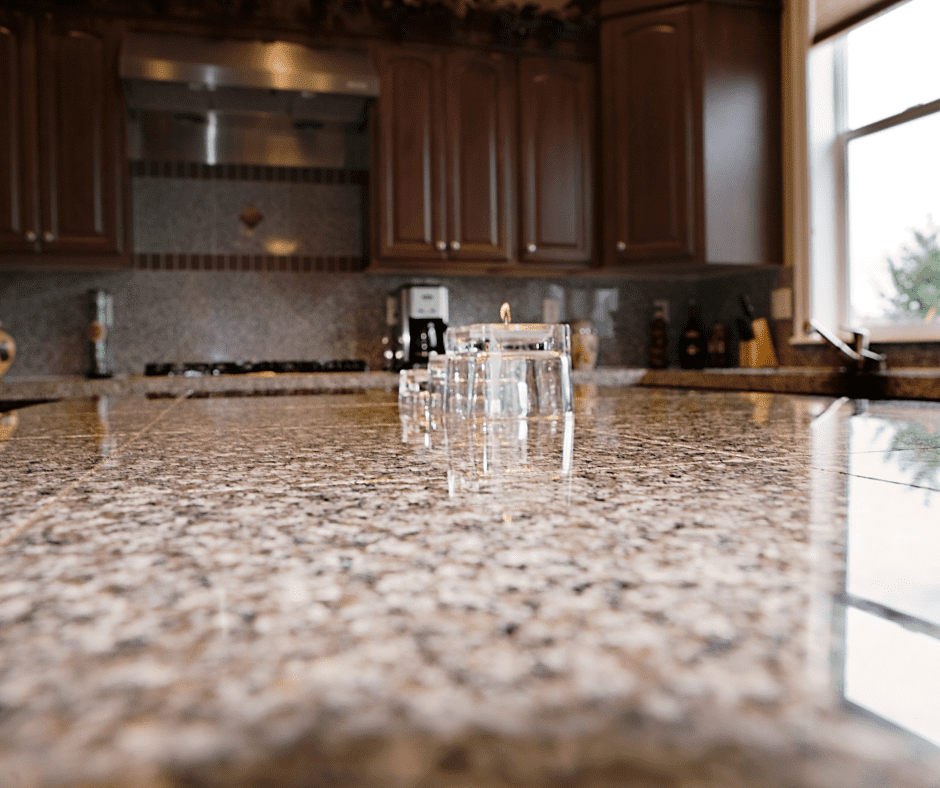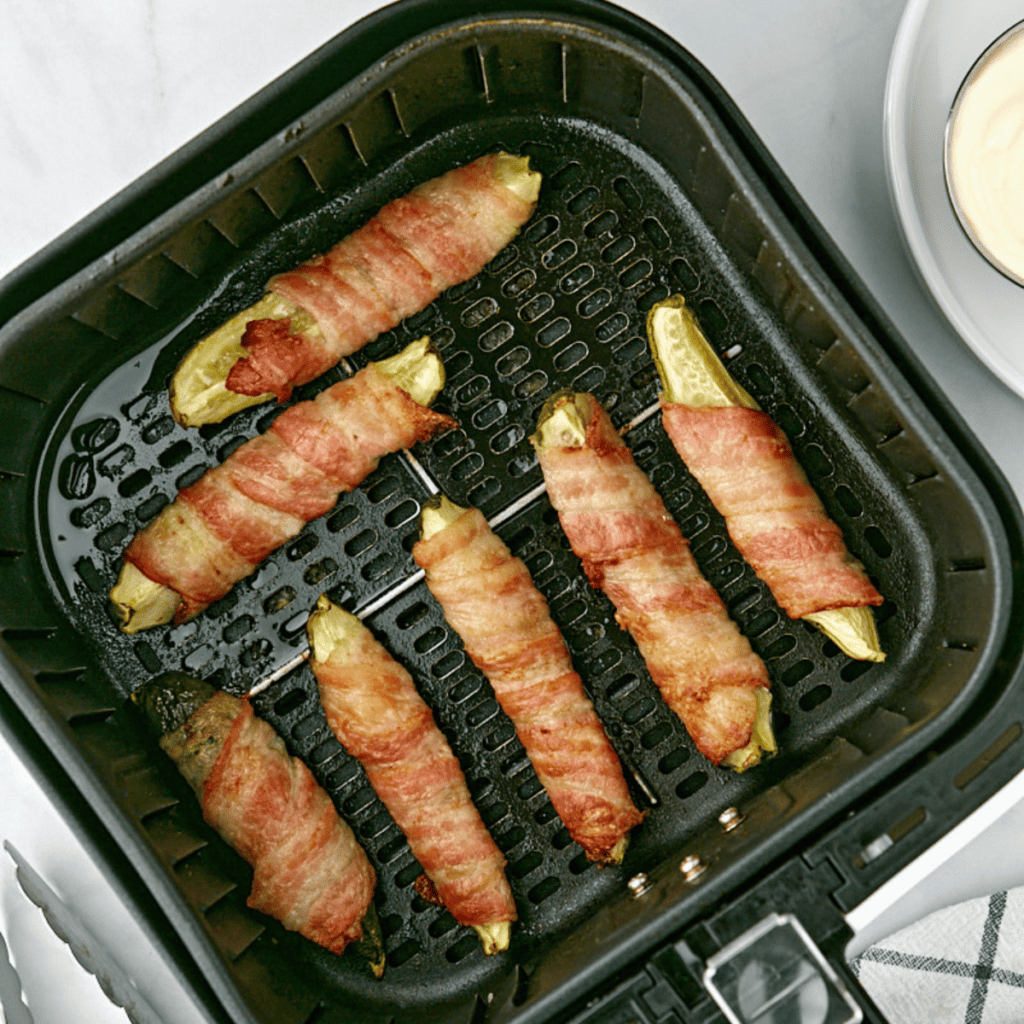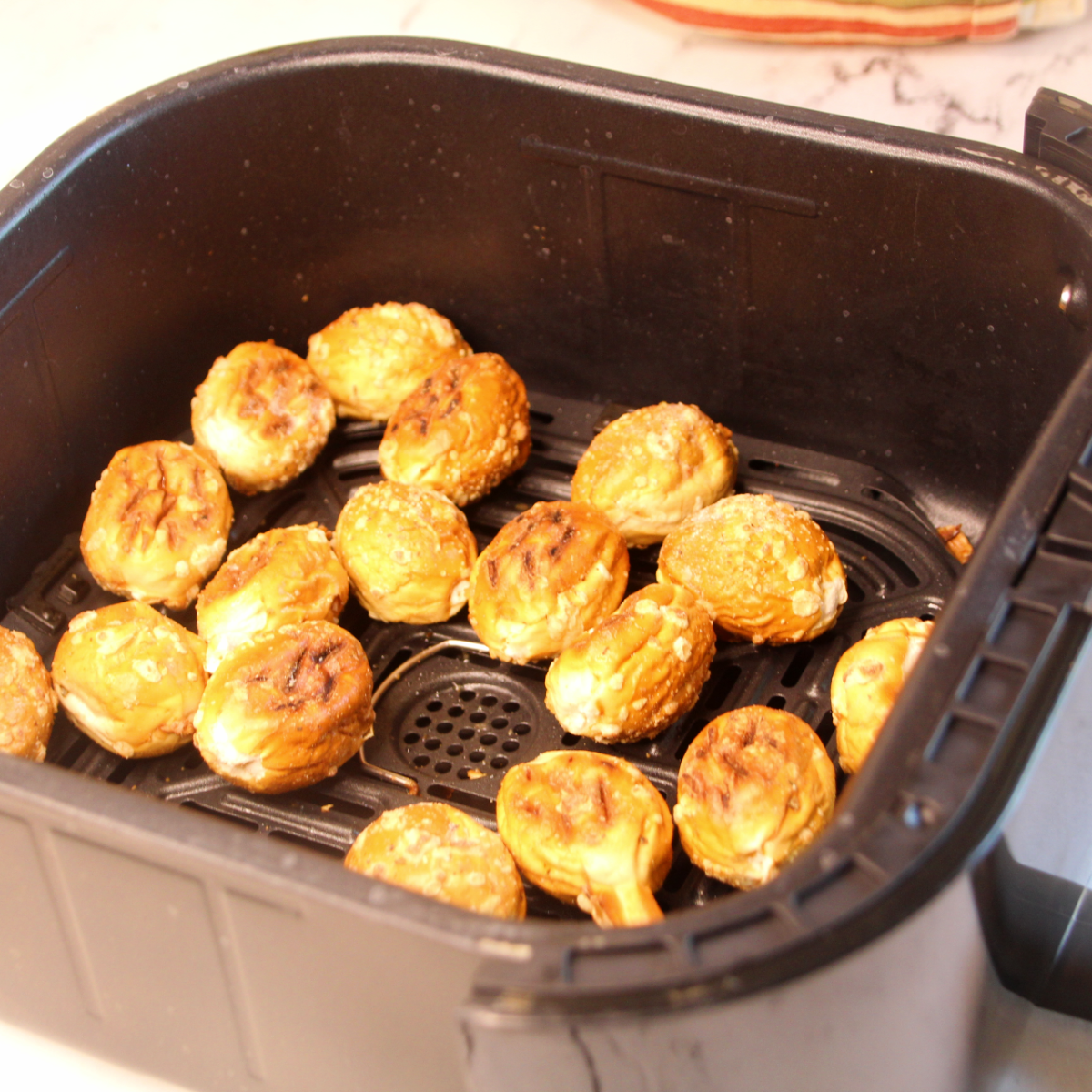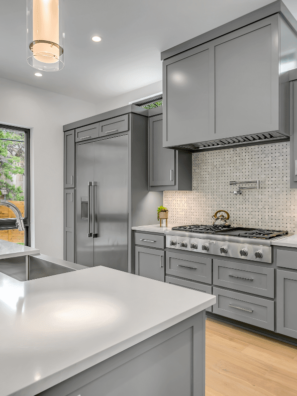Can You Put Air Fryer On Stove Top —The rise of air fryers has revolutionized how we cook, offering a healthier alternative to traditional frying methods without compromising taste and texture.

But as with any popular kitchen appliance, questions and experiments arise, and one curious question that has been pondered is, “Can you put an air fryer on the stovetop?” While it might seem like a creative idea to combine two cooking methods, this is where we need to separate the practical from the plausible. In this article, we will dive into why putting an air fryer on the stovetop is impractical and potentially hazardous and explore better alternatives for expanding your culinary horizons.
Understanding Air Fryer Functionality
To comprehend why using an air fryer on the stovetop is a no-go, we need to understand the basic mechanics of an air fryer’s operation. Air fryers rapidly circulate hot air around the food, creating a crispy exterior similar to deep frying but with little to no oil while still getting the same taste of deep-fried foods.
The heating element is typically located at the top of the appliance, while the air vents are positioned strategically to allow proper air circulation.
If you are looking for great recipes, try my recipe for air fryer pork chops, chicken nuggets, or Instant Pot Mashed Potatoes.
Can You Put An Air Fryer On The Stove?
The short answer is no; you should not put an air fryer on the stove. Placing an air fryer on the stove is unsafe and can lead to potential hazards and damage to the air fryer and the tove. Air fryers are designed to operate as standalone countertop appliances and should not be placed on or near a heat source like a stove.
Here are a few reasons why you should avoid putting an air fryer on the stove:
- Incompatible Design: Air fryers are designed with specific ventilation and airflow systems essential for proper cooking. Placing an air fryer on the stove obstructs the air vents, disrupting airflow and compromising cooking.
- Risk of Fire Hazard: Air fryers rely on hot air circulation for cooking, and placing them on a stove with an open flame or electric coil can be extremely dangerous. Direct contact with the stove’s heat source can lead to a fire hazard, potentially causing serious damage and harm.
- Unstable and Unsafe: Stove tops are not designed to support the weight of an air fryer, which can lead to instability and tipping. This poses a risk of injury to the user and can damage the air fryer and the stove.
- Overheating: Placing an air fryer on the stove can block the vents and cause the appliance to overheat, leading to malfunctions and potential damage.
Always use your air fryer on a flat, stable countertop surface to ensure safety and proper functionality, away from heat sources. Follow the manufacturer’s guidelines and instructions for safe usage and enjoy the benefits of air frying with peace of mind.
The primary issue lies in the incompatible design when using an air fryer on the stovetop. Placing an air fryer directly on a stove burner obstructs the air vents, disrupting the essential airflow required for proper cooking. This can lead to appliance overheating and potential damage to the air fryer and the stovetop. Moreover, stove tops are not designed to support the weight of an air fryer, making them unsafe and unstable.

Why You Shouldn’t Place The Air Fryer On The Stove
Placing the air fryer on the stove is not recommended for several reasons. Here’s why you should avoid this practice:
- Fire Hazard: Air fryers rely on a powerful heating element to circulate hot air for cooking. Placing the air fryer directly on a stove with an open flame or electric coil can lead to a serious fire hazard. The high temperatures the stove generates can cause the air fryer to overheat and potentially catch fire.
- Damaging the Air Fryer: Stove tops are not designed to support the weight of an air fryer. Placing the appliance on the stove can lead to instability, tipping, and potential damage to the air fryer and the stove. The heat of the air fryer can damage the stove; in the long run, you are better off investing in an air fryer range, or finding a countertop space, for your air fryer.
- Airflow Obstruction: Air fryers are designed with specific airflow and ventilation systems to ensure even cooking. Placing the air fryer on the stove can obstruct the air vents, disrupting the necessary airflow and compromising the cooking process. This can result in unevenly cooked food and may even damage the internal components of the air fryer.
- Unsafe Cooking Environment: Placing the air fryer on the stove creates an unsafe cooking environment. The air fryer’s power cord and control panel can be exposed to the stove’s heat, potentially damaging the cord and electrical components.
- Risk of Accidents: Placing the air fryer on the stove can increase the risk of accidents in the kitchen. It can be easy to forget that the stove is on when using the air fryer, leading to accidental burns or other injuries. The main accident most people have is the electrical outlet interfering with air fryer placement.
- Voiding Warranty: Placing the air fryer on the stove may void the manufacturer’s warranty. Most warranties specify that the appliance should be used according to the provided instructions, and using the air fryer on the stove would be considered improper usage.
To ensure your safety and protect your appliances, it’s essential to use the air fryer as intended – on a flat, stable countertop surface away from any heat sources. Always read and follow the manufacturer’s instructions and safety guidelines for your air fryer to ensure proper and safe usage.
Risk of Fire Hazard
One of the most critical concerns of placing an air fryer on the stovetop is the risk of a fire hazard. Since air fryers rely on hot air for cooking, direct contact with an open flame or electric coil on the stovetop can lead to disastrous consequences. Additionally, if the air fryer’s power cord is too close to the stove’s heat source, it could melt or catch fire, posing a significant safety risk to the appliance and the cook.
Explore Safer Cooking Alternatives
While you cannot put an air fryer on the stovetop, there are various ways to expand your culinary repertoire and complement your air fryer cooking. Consider these alternatives:
- Oven Baking: Many recipes made in an air fryer can also be prepared in a conventional oven. Adjust the cooking time and temperature to achieve similar results.
- Stove Top Cooking: Utilize your stove top for sautéing, stir-frying, simmering, and other cooking techniques unsuitable for an air fryer. The stove top offers versatility and flexibility for a wide range of dishes.
- Outdoor Grilling: Take advantage of outdoor grilling to enjoy a smoky flavor and grill marks that are impossible with an air fryer. Grilling is perfect for burgers, steaks, vegetables, and more.
- Slow Cooking: Invest in a slow cooker or crockpot for tender and flavorful meals that require longer cooking times. Slow cooking is ideal for stews, soups, roasts, and braised dishes.
While putting an air fryer on the stovetop may seem inventive, it is not a safe or practical option. The air fryer’s design and functionality are incompatible with direct heat sources, posing fire hazards and potential appliance damage. Instead, explore other cooking methods like oven baking, stove-top cooking, outdoor grilling, and slow cooking to diversify your culinary skills and enjoy a variety of delicious dishes. Remember, safety should always be the top priority in the kitchen, and by using appliances as intended, you can create scrumptious meals without unnecessary risks.

Easy Air Fryer Recipes To Try
FAQ’s:
Can you put silicone mat under air fryer
Yes, you can place a silicone mat under an air fryer. A silicone mat can provide several benefits and help protect your countertop or other surfaces. Here are some reasons why you might consider using a silicone mat under your air fryer:
- Protection: Placing a silicone mat under your air fryer can protect your countertop or table from heat and potential damage. The air fryer generates heat during cooking, and a silicone mat acts as a heat-resistant barrier.
- Stability: Silicone mats have a non-slip surface, which can help keep your air fryer stable during operation. This reduces the risk of the appliance accidentally sliding or tipping, providing a safer cooking experience.
- Easy Cleanup: Silicone mats are easy to clean and can catch any drips or spills that may occur while using the air fryer. They are dishwasher-safe and can be quickly wiped down after cooking.
- Heat Insulation: Silicone mats offer heat insulation, which can help reduce heat transfer to the surface beneath the air fryer. This is especially useful if you have a sensitive or delicate countertop material.
- Versatility: Silicone mats can be used for other cooking tasks. You can use them as baking mats, trivets, or even for rolling out dough.
When using a silicone mat under your air fryer, ensure it is large enough to accommodate the base and any surrounding accessories. Ensure the mat is placed on a flat, stable surface to avoid accidents or instability during cooking.
Always check the manufacturer’s guidelines and recommendations for your specific air fryer model. Some air fryers may come with their own non-slip base or feet designed to protect surfaces, so using a silicone mat may not be necessary.
In summary, using a silicone mat under your air fryer can be a practical and helpful addition to your kitchen setup. It provides protection, stability, and easy cleanup, making your air frying experience even more enjoyable.
Do air fryers need to be vented
Yes, air fryers do need to be vented during operation. Ventilation is essential to air fryer design, as it allows for proper air circulation and heat dissipation, ensuring efficient and safe cooking.
Air fryers rapidly circulate hot air around the food, creating a crispy exterior similar to deep-frying but with much less oil. The heating element, usually located at the top of the appliance, generates hot air, and the fan inside the air fryer helps distribute this hot air evenly throughout the cooking chamber.
The ventilation system in an air fryer serves several purposes:
- Proper Air Circulation: Adequate ventilation ensures that hot air reaches all sides of the food, promoting even cooking and consistent results.
- Heat Dissipation: The ventilation system helps dissipate excess heat generated by the heating element and prevents the air fryer from overheating.
- Steam Release: As food cooks, it releases moisture in the form of steam. The vent allows this steam to escape, preventing it from condensing and making the food soggy.
- Safety: Ventilation helps prevent pressure buildup inside the air fryer, reducing the risk of accidents or malfunctions.
- Odor Release: Cooking can produce aromas and odors, and the vent allows these smells to escape, preventing them from lingering in your kitchen.
It is crucial not to block or obstruct the air fryer’s vents during operation. Placing the air fryer in an area with sufficient clearance ensures proper ventilation and efficient cooking.
Always follow the manufacturer’s instructions and safety guidelines when using your air fryer, including any recommendations on placement and ventilation. Proper venting will help you get the best results from your air fryer while ensuring safe and enjoyable cooking experiences.

What surface can I put my air fryer on
You can safely place your air fryer on various surfaces, but choosing a stable, heat-resistant, and flat area is essential for optimal performance and safety. Here are some suitable surfaces for your air fryer:
- Countertops: Most air fryers are designed to be placed on kitchen countertops. Standard kitchen countertops made of granite countertops, marble countertops, quartz countertops, laminate, or stainless steel provide a stable and heat-resistant surface for your air fryer.
- Kitchen Islands: If you have a kitchen island with a flat surface, it can be an excellent spot for your air fryer. Ensure the island is stable and can support the weight of the appliance.
- Heat-Resistant Mats: Consider using a heat-resistant mat or silicone pad under the air fryer to protect your kitchen countertop from the heat of an air fryer or scratches. These mats provide an additional layer of protection and stability.
- Cutting Boards: Large, flat cutting boards made of wood, bamboo, or heat-resistant materials can be a temporary surface for your air fryer if needed. However, avoid using plastic cutting boards, as they may melt or deform due to the heat.
- Heat-Resistant Trays or Baking Sheets: If you prefer extra protection, place your air fryer on a heat-resistant tray or baking sheet to catch any potential drips or spills.
- Dedicated Air Fryer Stand or Cart: Some homeowners opt for dedicated stands or carts for air fryers or small kitchen appliances. These can provide a designated space for your air fryer, keeping it easily accessible and organized.
Avoid placing your air fryer on surfaces that are not heat-resistant or unstable, such as wooden surfaces that can be damaged by heat or glass surfaces that may crack under the appliance’s weight. Also, never place the air fryer directly on a stovetop or near any heat sources.
Always read the manufacturer’s guidelines and instructions for your specific air fryer model to ensure proper usage and placement. You can enjoy safe, efficient, and delicious cooking experiences by choosing a suitable surface for your air fryer.
Will my air fryer melt my countertop
In general, air fryers are designed to be safe for use on kitchen countertops, and they should not cause any damage or melting to properly installed and heat-resistant countertops. Modern air fryers are equipped with safety features and designed to generate heat internally, directing it away from the outer surfaces to prevent overheating external components.
However, there are a few factors to consider to ensure your air fryer does not cause any damage to your countertop:
- Heat Resistance: Make sure your countertop material is heat-resistant. Most commonly used countertop materials like granite, quartz, laminate, and stainless steel are heat-resistant and should not be affected by the heat generated by the air fryer.
- Proper Ventilation: Ensure that the air fryer’s vents are not obstructed and sufficient space around the appliance for proper air circulation and heat dissipation. Adequate ventilation helps prevent overheating and keeps the external surfaces cooler.
- Correct Usage: Follow the manufacturer’s instructions and safety guidelines for your specific air fryer model. Avoid using the air fryer on high heat settings for an extended period, as excessive heat may lead to issues.
- Use Heat-Resistant Mats: To provide an extra layer of protection, you can place a heat-resistant mat or silicone pad under the air fryer. These mats can help further insulate the countertop and prevent any potential heat transfer.
- Keep Away from Heat Sources: Do not place the air fryer near other heat sources, such as stovetops, ovens, or toasters, as this can lead to additional heat exposure and potential countertop damage.
By taking these precautions and using your air fryer responsibly, the chances of it causing any damage to your countertop are minimal. However, if you have specific concerns about your countertop material or air fryer usage, it’s best to consult the manufacturer or a kitchen professional for personalized advice.





